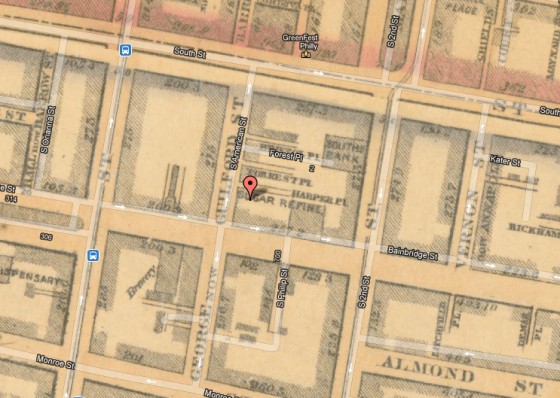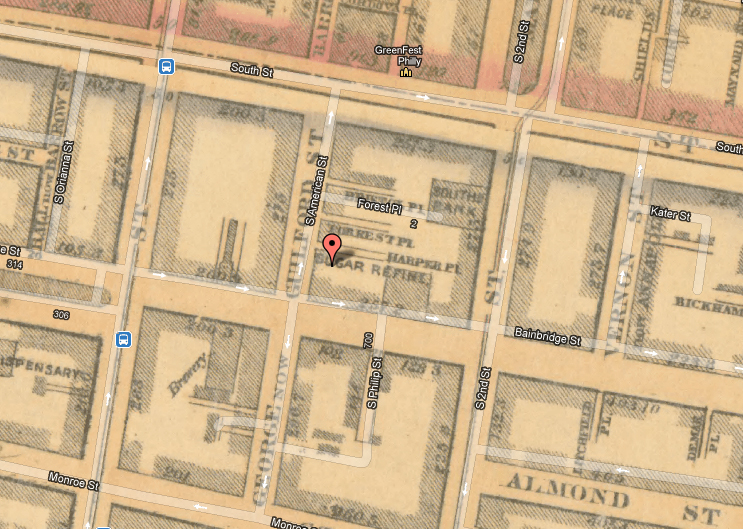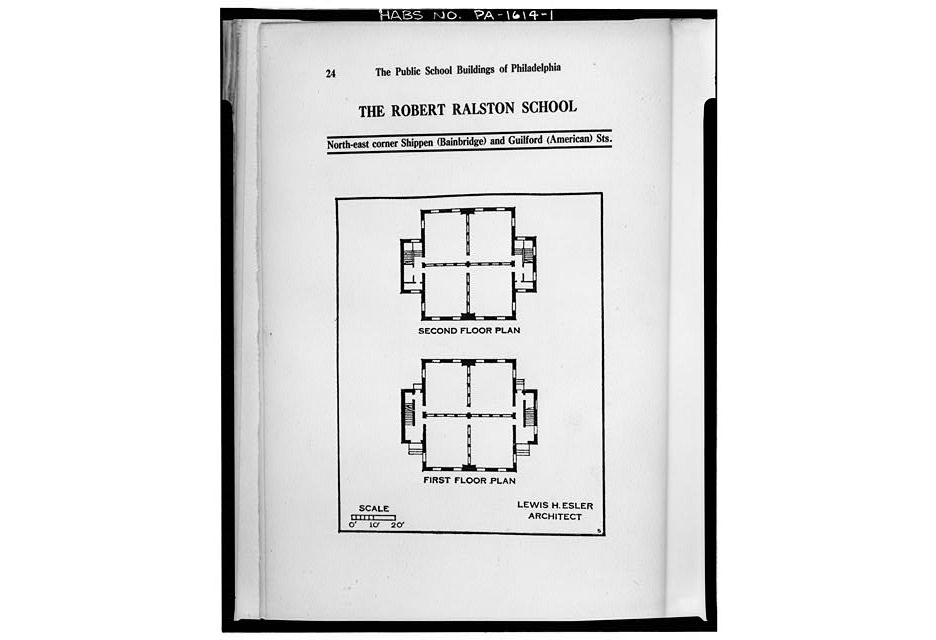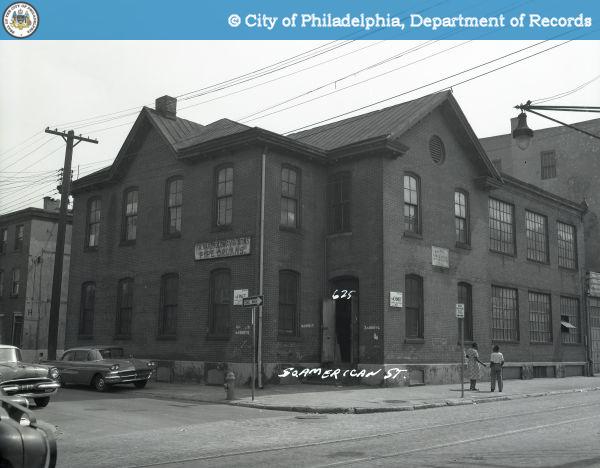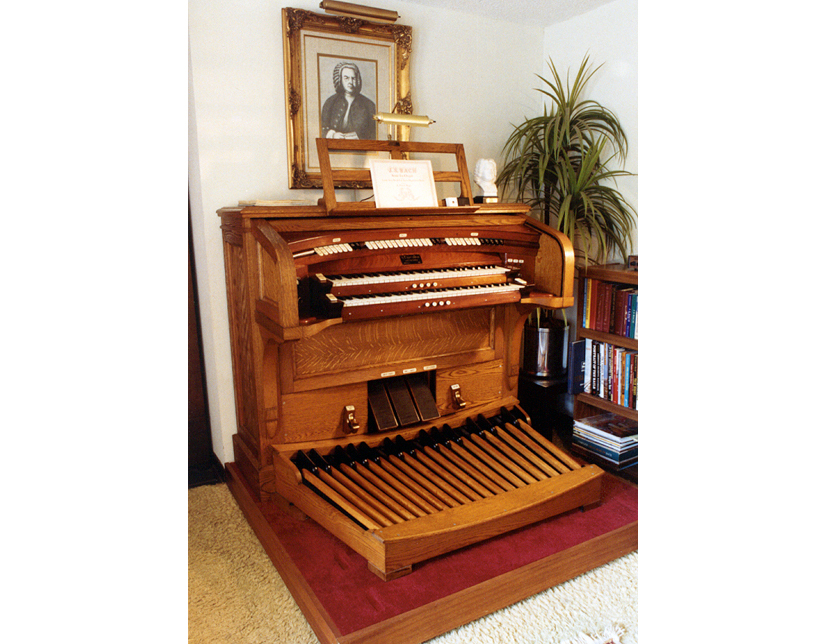The aesthetically pleasing townhouse at the corner of Bainbridge and American Streets is a private residence today, listed as 221 Bainbridge Street. However, in its earliest incarnation, as 625 Guilford St. (today American St.), this corner has seen a host of occupants, both in the commercial and public capacities. Its history began as part of the industrial sector permeating the Queen Village neighborhood. According to Samuel L. Smedley’s 1862 Philadelphia Atlas, the building that occupies this corner was a sugar refinery in the mid-19th century.
According to Wikipedia, the Robert Ralston school opened on half of this site in 1869, with W. Lang & Son’s Rock Candy occupying the other half. By the turn of the century, only the Ralston school would remain on this site. The Library of Congress tells that the Ralston School was part of a spate of new schools opened after the Civil War under the so-called “Philadelphia Plan.” The Library of Congress reports that said plan “provided wide, safe front and rear exits and movable partitions for flexible teaching spaces.” These features are conveyed in the 1933 floor plan shown here below.
While we were unable to determine the exact date of closure for the Ralston school, it seems likely that it was no longer in operation by 1959, lest its students were expected to share space with a pipe organ manufacturing operation. A photo from that year, taken from the Department of Records, shows that the building was occupied by F.A. Bartholomay & Sons Pipe Organs.
The Bartholomay brand of organs achieved relative penetration in the Philadelphia area. While the factory at American and Bainbridge was no longer in business by the late 20th century, the 1986 photo here, taken from My Organ Page (it’s not what it sounds like) shows a fully restored Bartholomay.
According to Wikipedia, 1986 is also the year that Ralston and several dozen other public school buildings were added to the National Register of Historic Places. Thereafter, the historically significant structure was converted into a rather nice private residence in 1995, as shown here below.
–David Tomar

